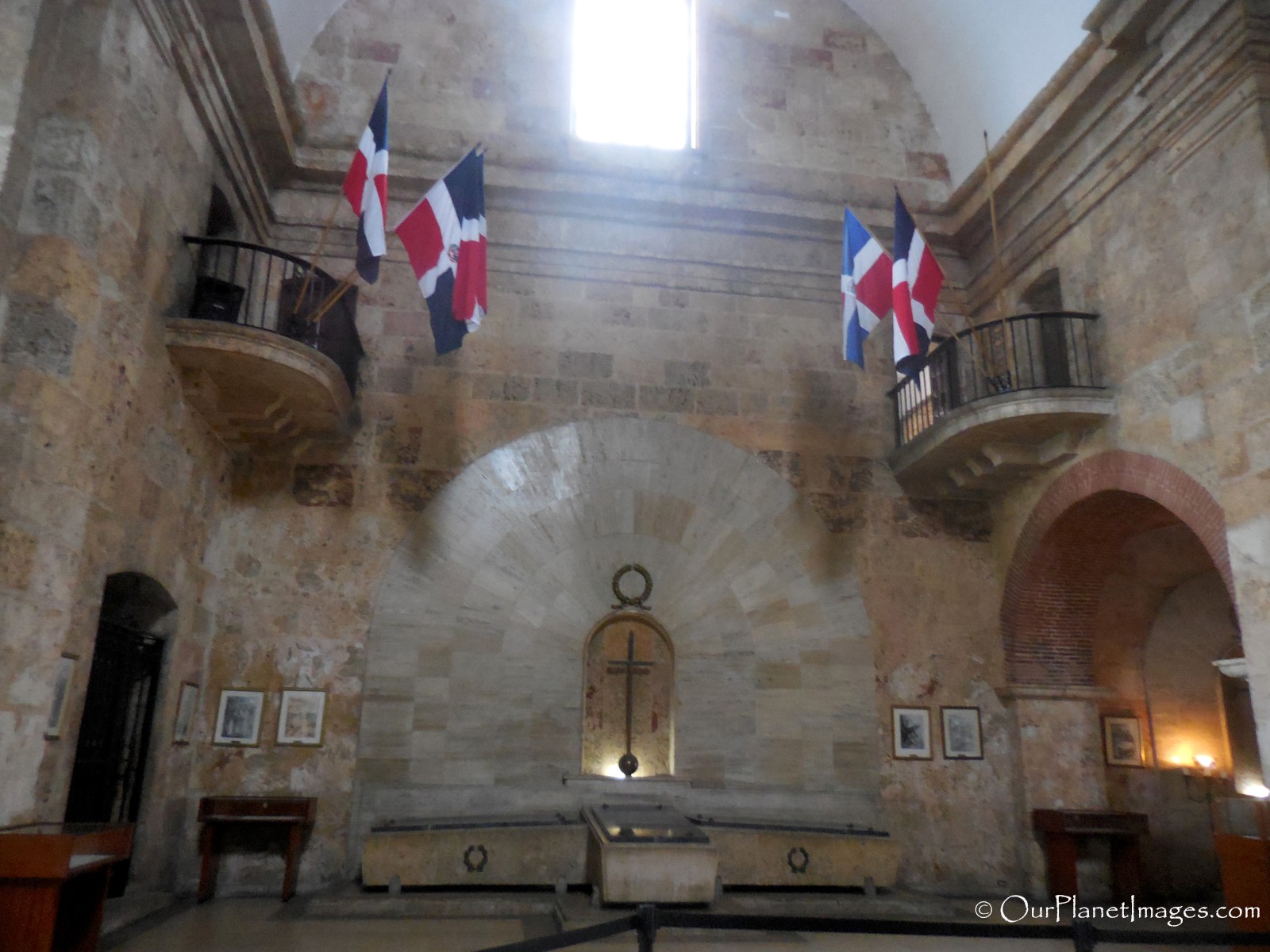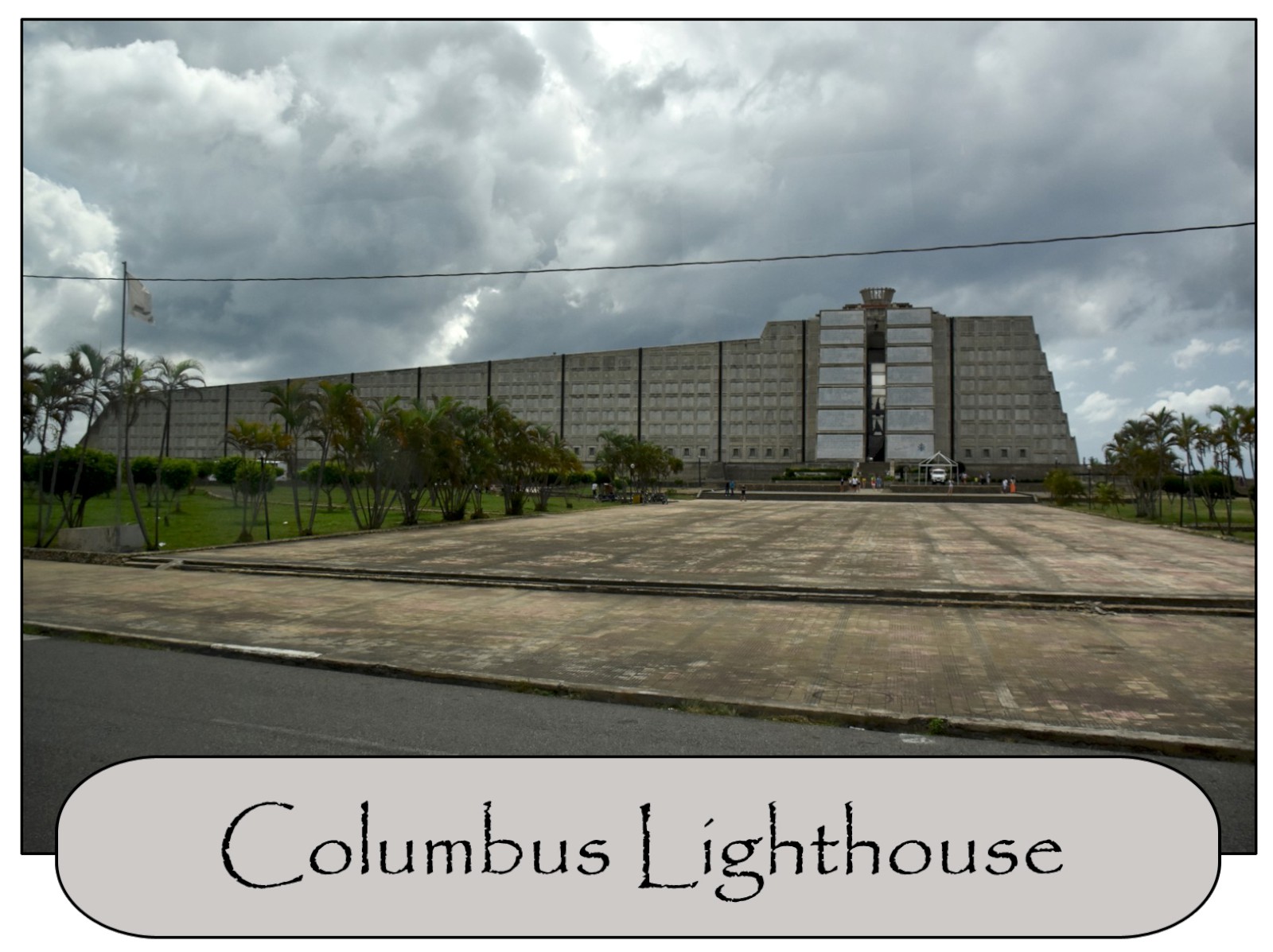The Pantheon of the Fatherland honors heroes of the Dominican Republic.
The Pantheon of the Fatherland building was built between 1715 and 1745 but it was not built for its current purpose. The building was originally built to be the Jesuits Convent and it was their home until 1767 when the Jesuits were expelled from the country.
After the church was closed, the building was used as a tobacco warehouse, a theater and a government office building.
I n 1958, the Dominican Republic dictator Rafael Trujillo had the building repaired for the purpose of having his remains entombed in the building when he died. Trujillo was assassinated in 1961 and his body was removed from the country. The building never held his remains.
The building was converted into the Pantheon of the Fatherland in the 1970s to be a national mausoleum where many heroes of the Republic are laid to rest, including Trujillo’s assassins.
Now, the Pantheon of the Fatherland contains the remains of many of the national heroes of the Dominican Republic. The people that are included are the heroes of the independence from Spain and Haiti, heroes of the restoration (independence from Spain), Presidents and historians.
The Exterior
The huge gray limestone façade of the building is very impressive with a bell tower that contains two bells and the Dominican Republic Coat of Arms above the entrance door.
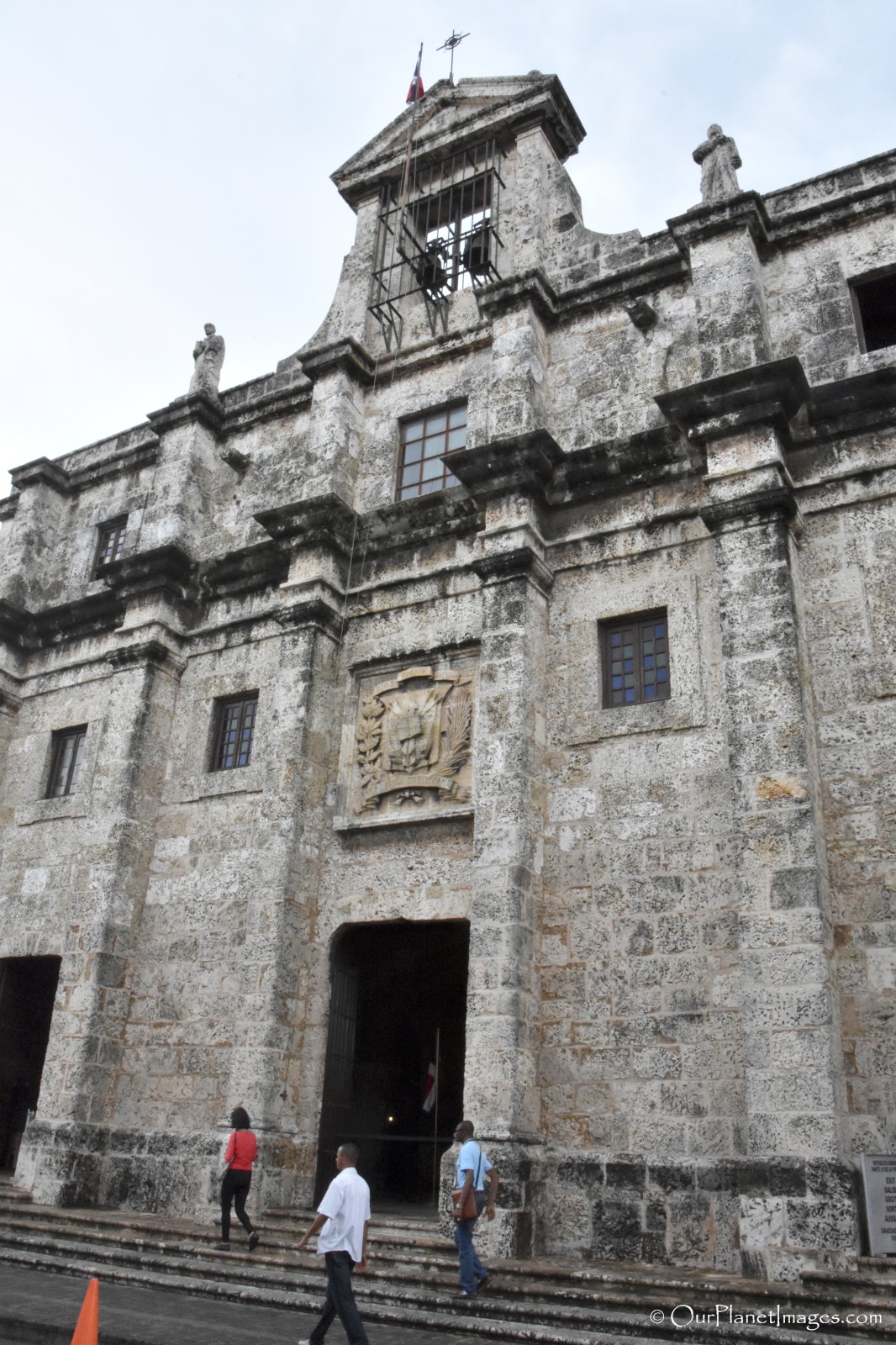
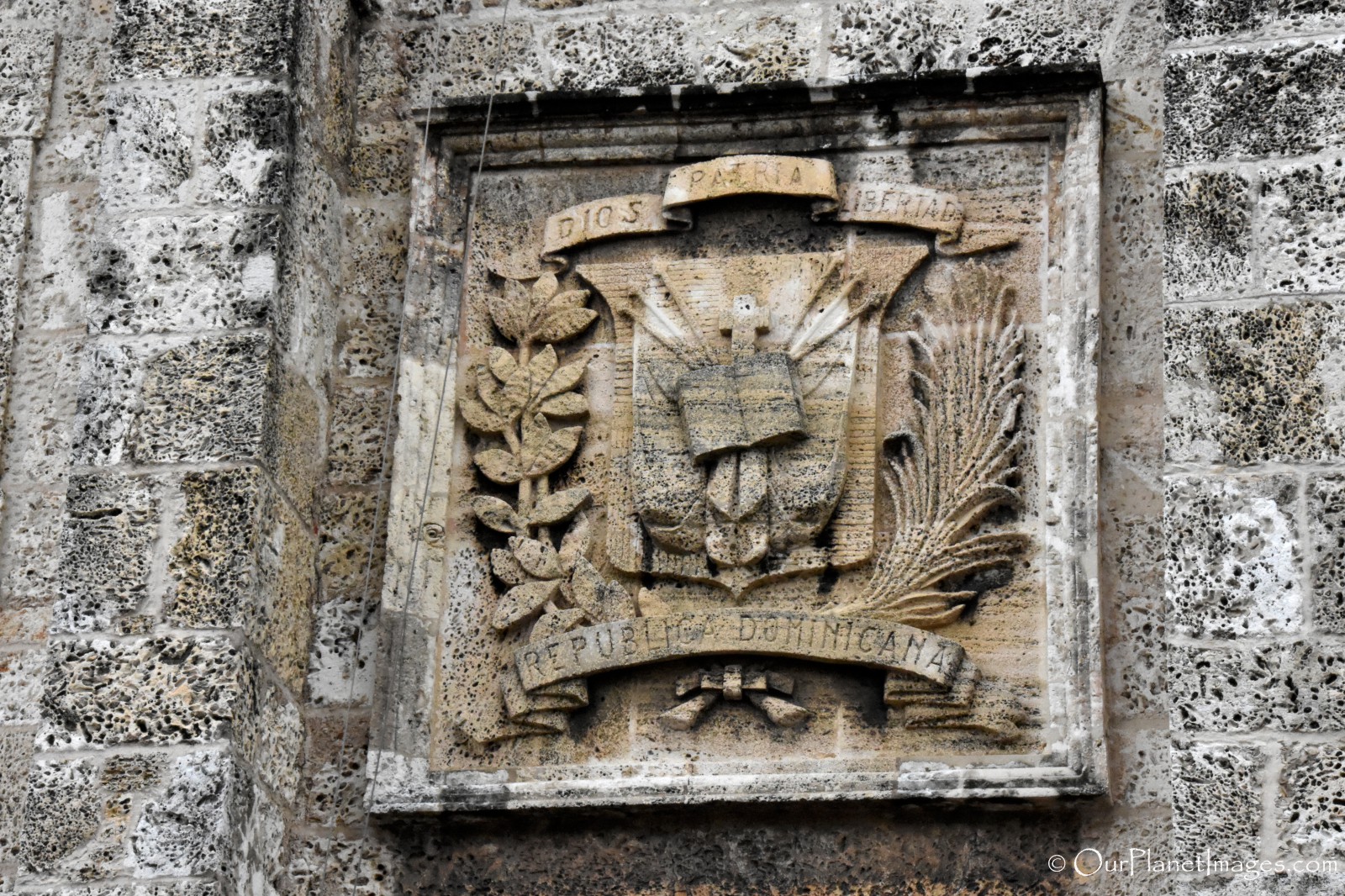
The Interior
Immediately upon entering the building, a red carpet in the center of the hall leads to and eternal flame that burns 24 hours a day. On both sides of the red carpet are six Dominican Republic flags spaced evenly apart. This impressive entrance hall sets a very reverent atmosphere when entering the building.

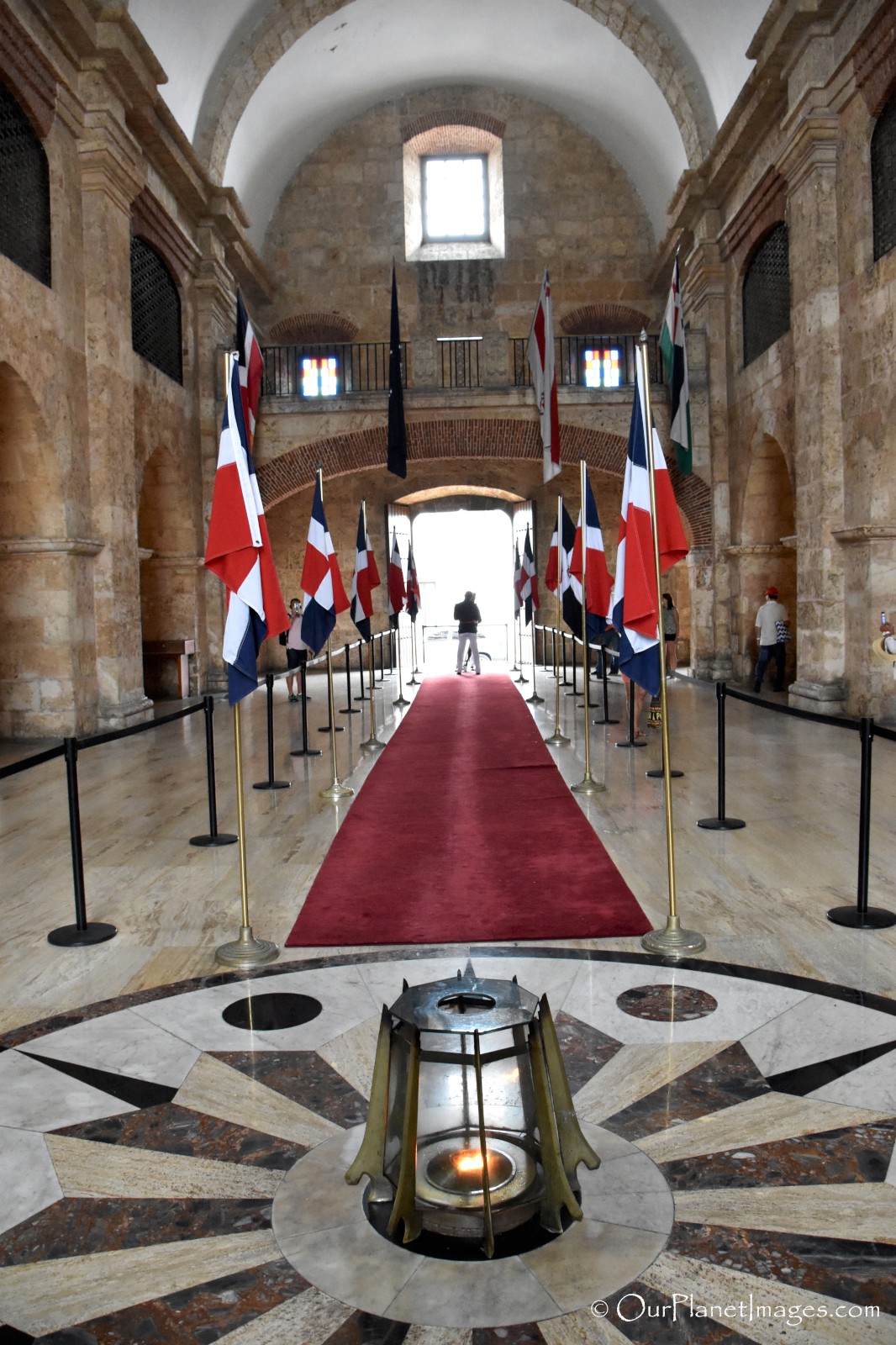
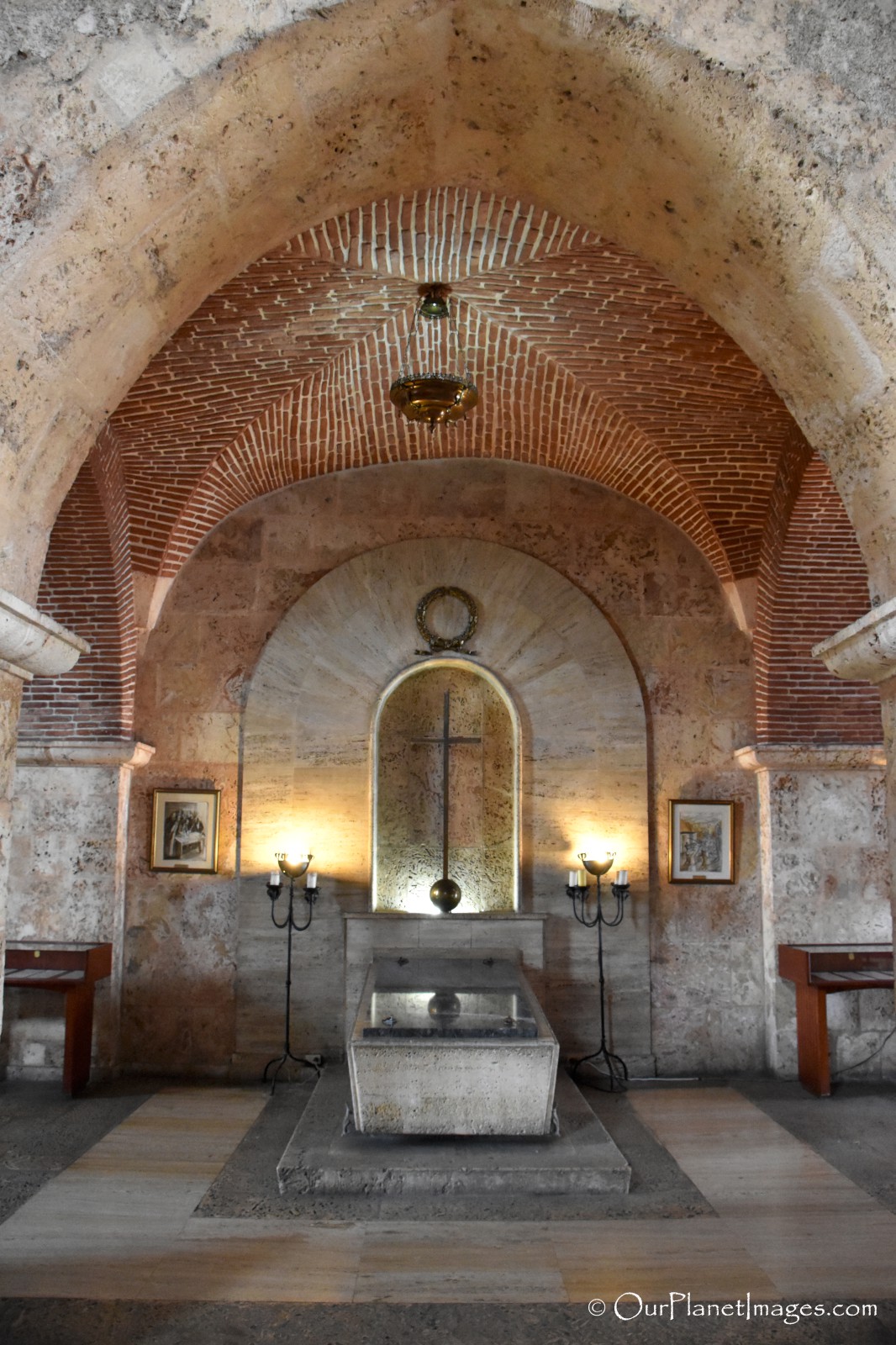
The remains of each of the heroes are given a very impressive memorial position of honor and a guard on duty watches over the heroes and the eternal flame.
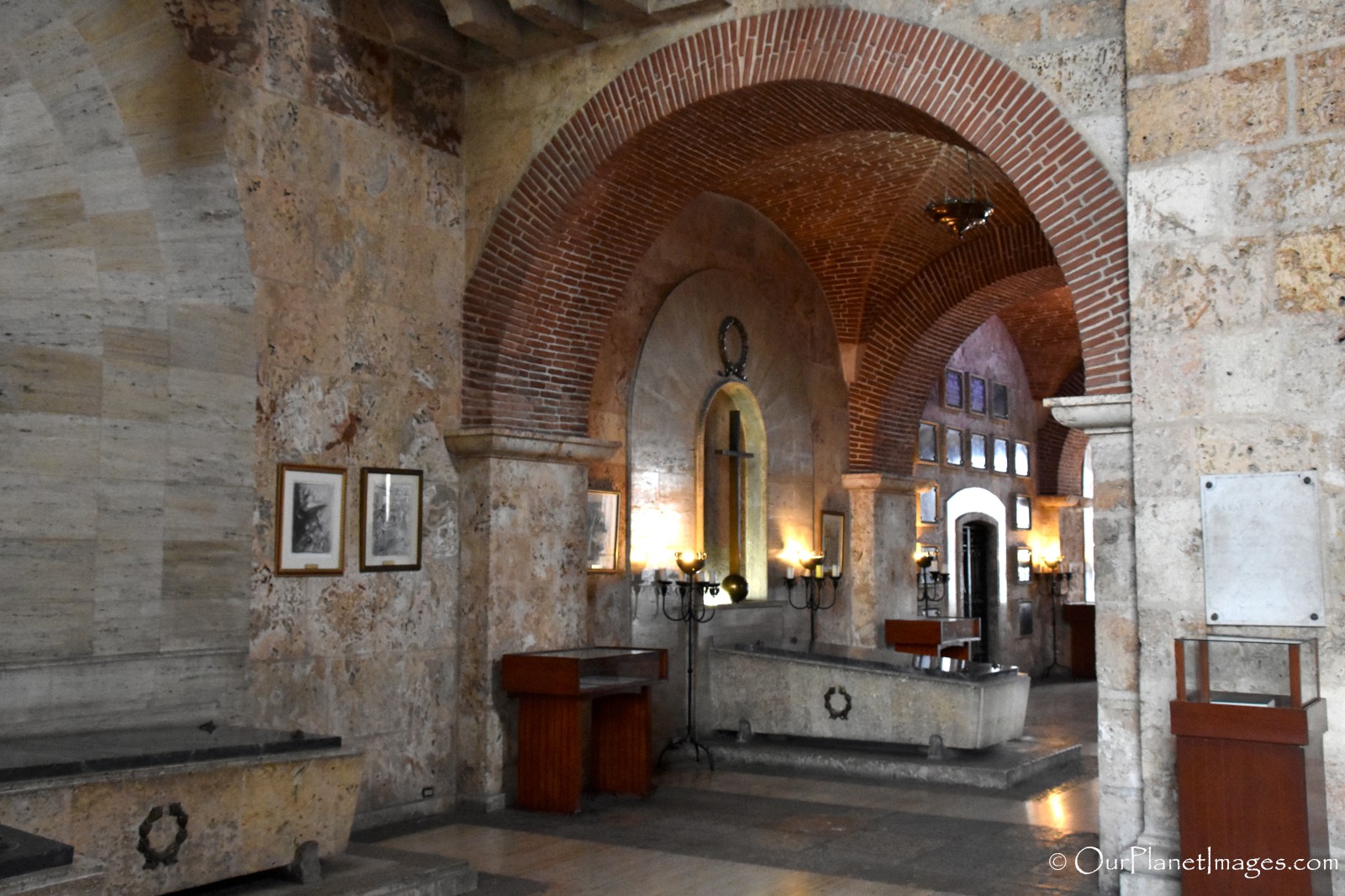
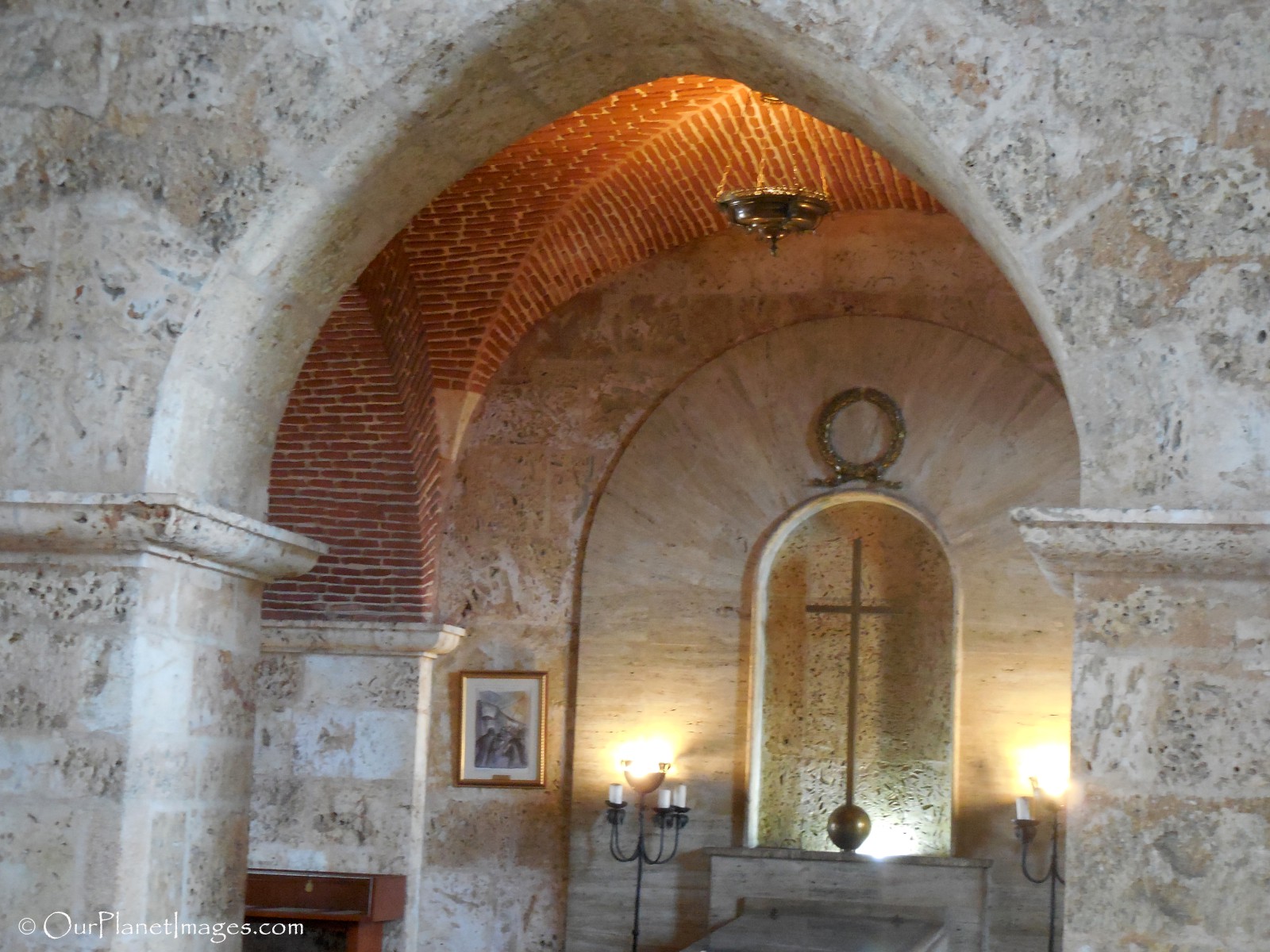
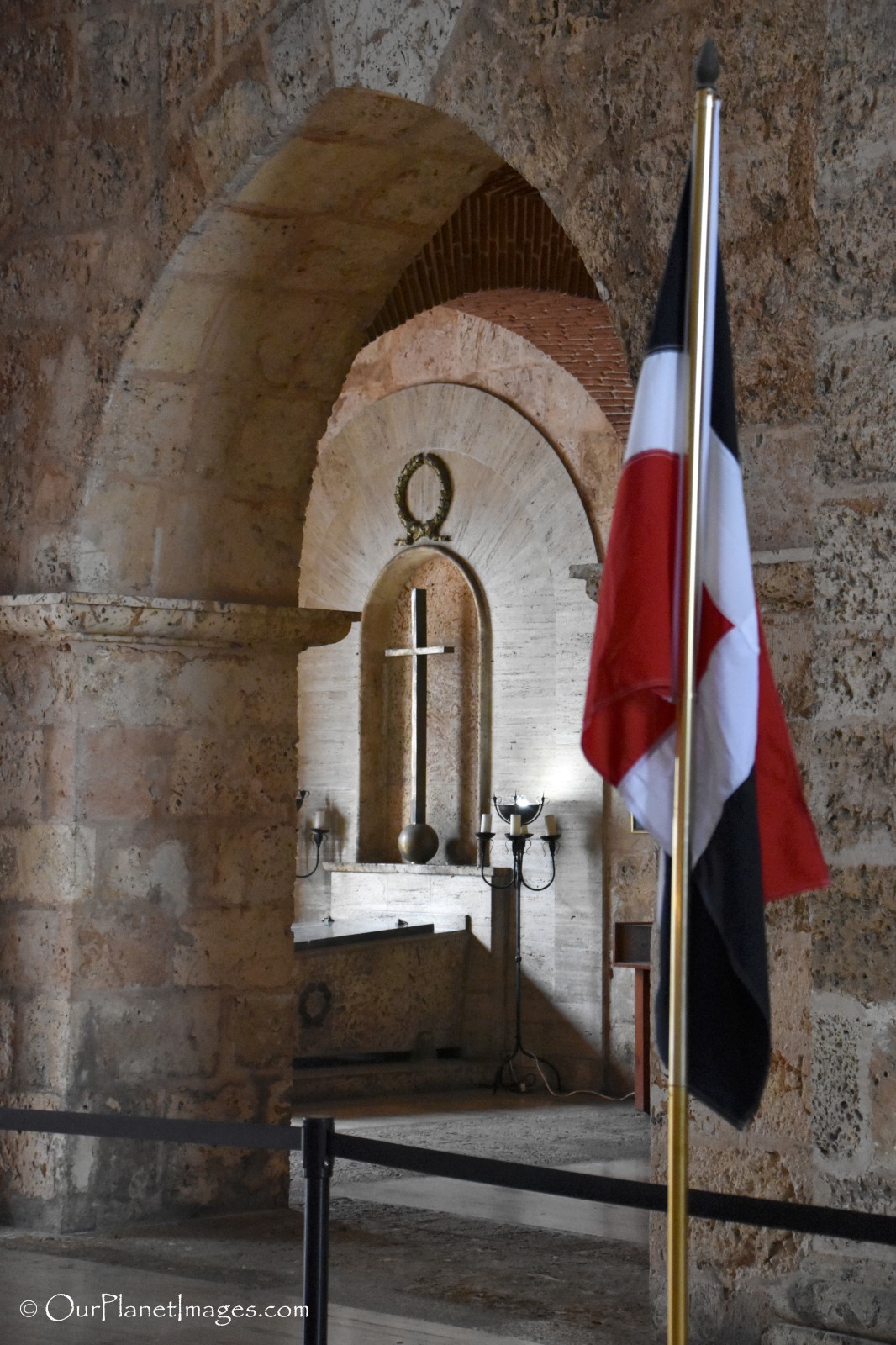
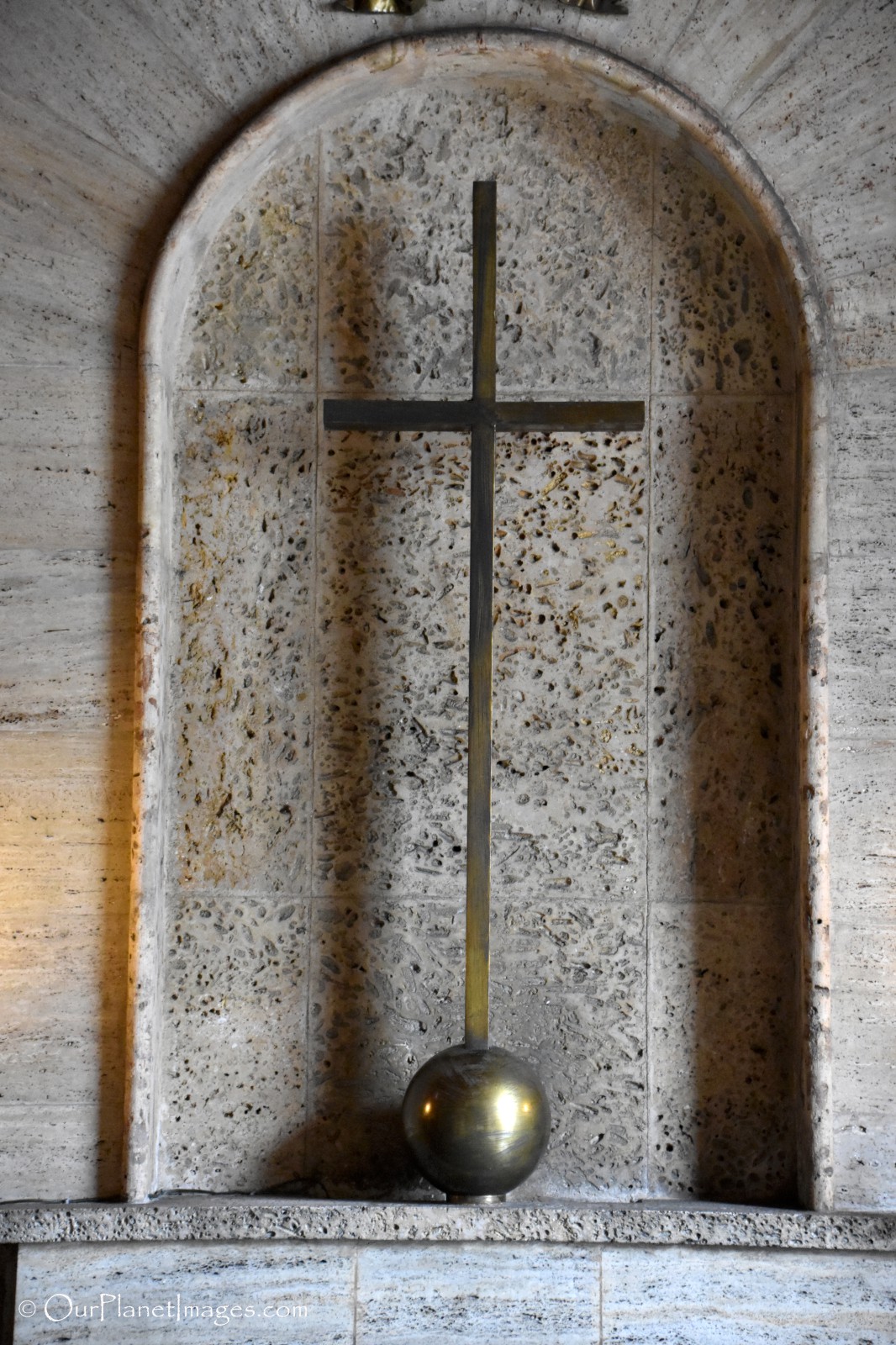
Painted Mural
Painted on one of the vaulted ceilings is an impressive mural that reminds me of something that would be seen in a European church. The mural is called “Ascension to Heaven”.
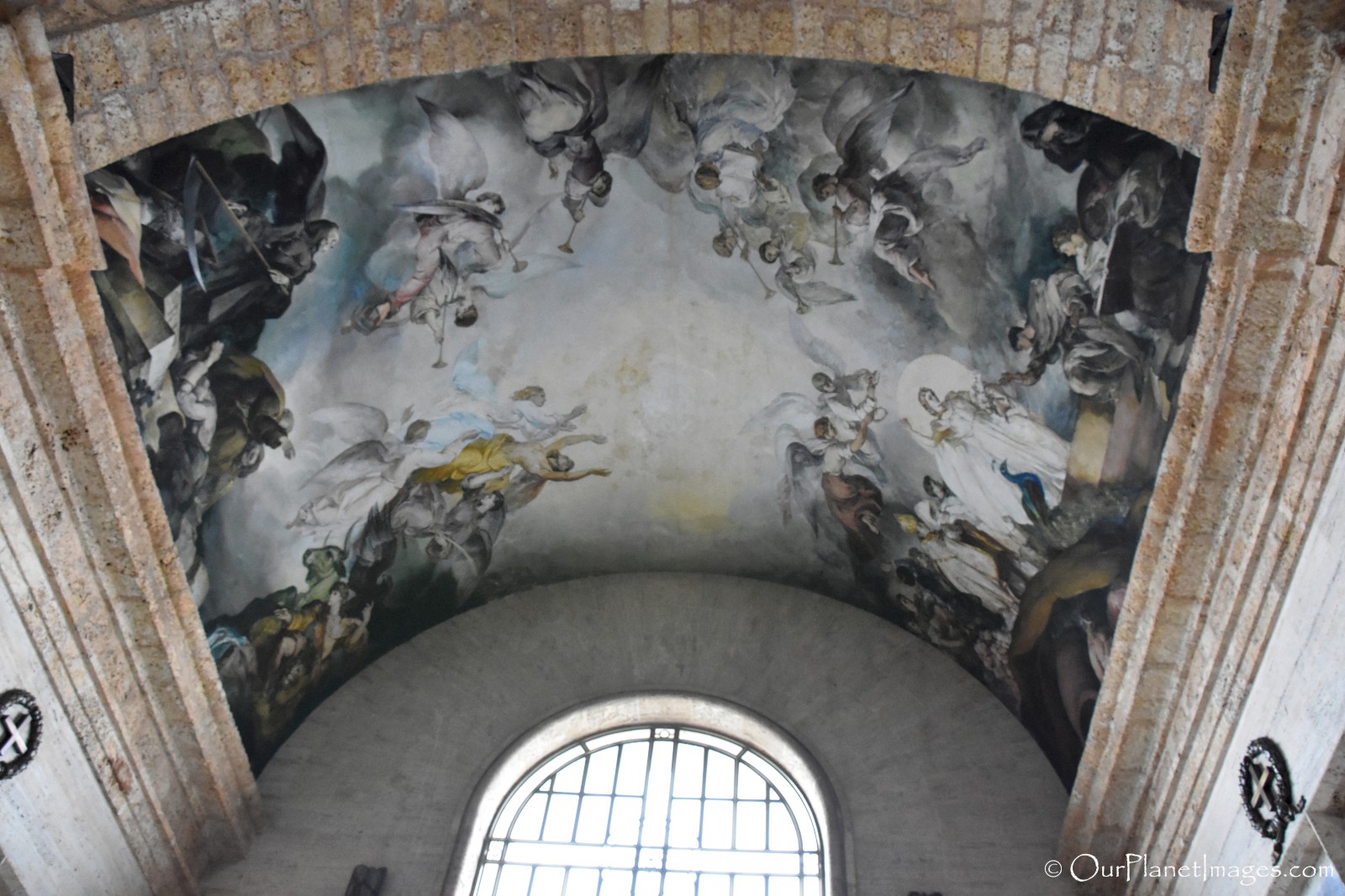
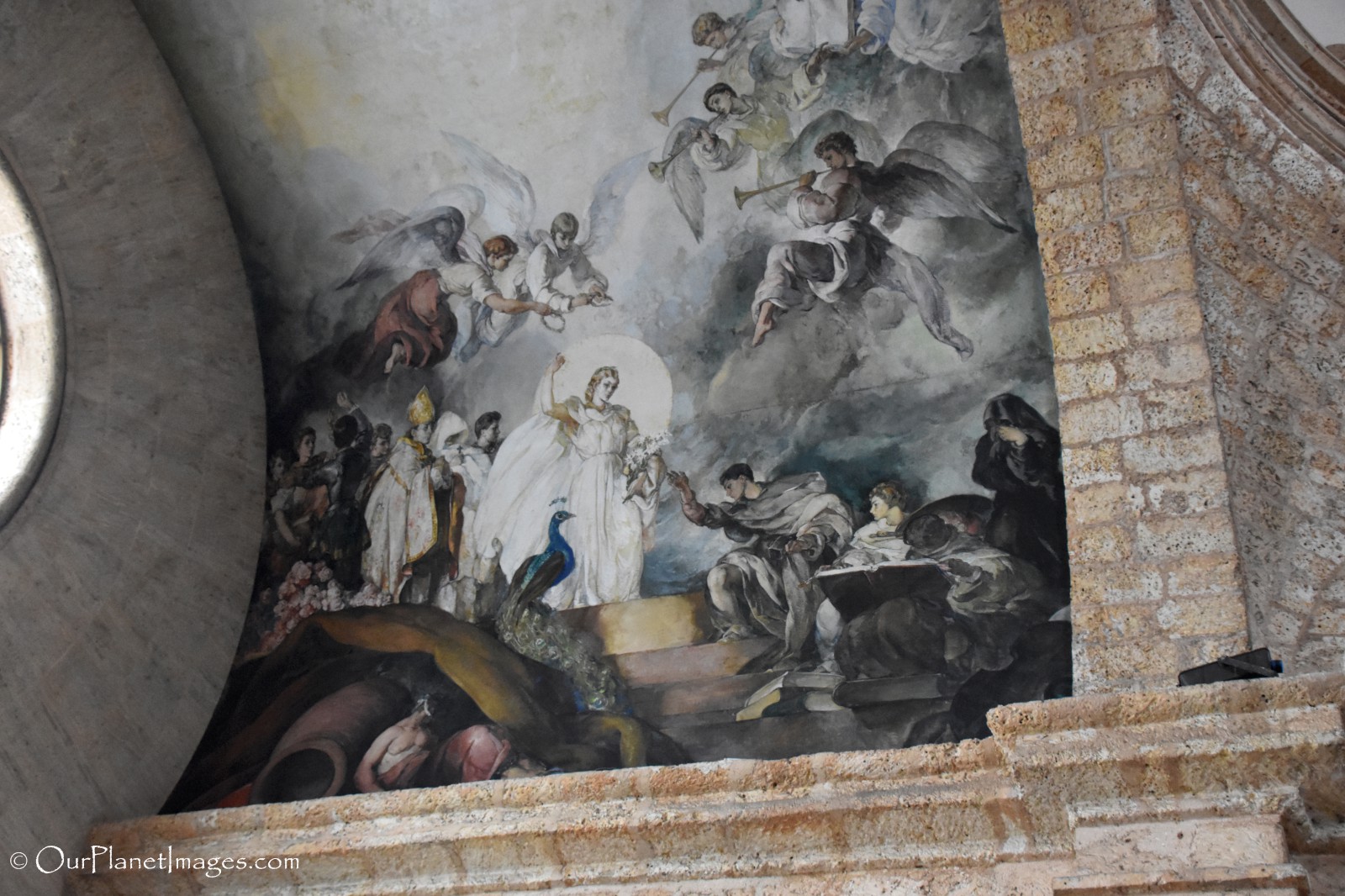
The Dust on My Shoes
The Pantheon of the Fatherland was an interesting place to visit. I have visited a few mausoleums in my travels but all of the other mausoleums have been dedicated to a single person, normally a ruler of a country. This is the first mausoleum that I have visited where many people were honored. It is a mausoleum for the people that brought changes to make the country better.
Some people in history make tremendous sacrifices for the betterment of their country and there are too many people that make the ultimate sacrifice. These people should be considered heroes and they should be honored for the sacrifice that they made.
It is sad that wars and revolutions have needed to happen to bring changes that should have happened without conflict but it was nice to see that many of those people were honored in the Pantheon of the Fatherland.
My travels are not only about seeing beautiful places and having fun. When I travel, I like to learn about the places where I am visiting. Sometimes I visit sites that are somber and help me to be grateful for the sacrifices that other people have made to make our world more enjoyable.
I travel to see exciting places, beautiful nature, amazing wildlife and to have fun but I have always returned home with new knowledge that I would not have learned without my travels.
